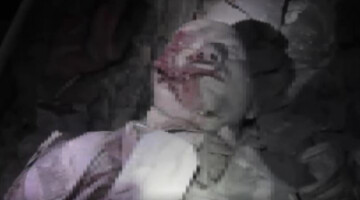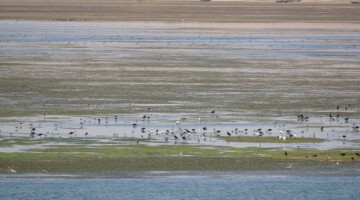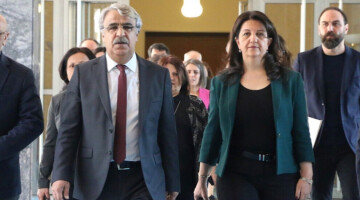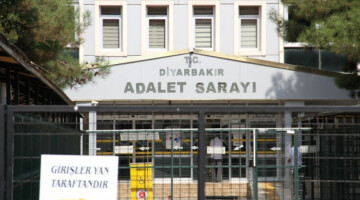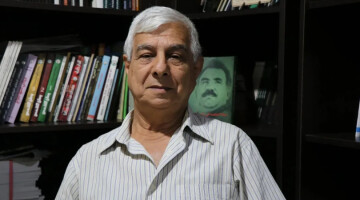ANHA correspondent Dicle Ehmed talked to ANF on the anniversary of Manbij's liberation from ISIS. "When we entered Manbij, - she said – we arrived in Warde Square. There was still blood on the stone where ISIS cut people's heads off. Despite all the violence and cruelty, the people of Manbij did not bow down. At the beginning of the revolution, after Kobanê, Manbij was one of the places that opposed the regime.”
Dicle Ehmed, one of the witnesses of the liberation operation of Manbij, evaluated the operation from the perspective of a journalist.
As a journalist, can you tell us about the atmosphere of that period?
The operation to liberate Manbij was carried out following the call of the people of Manbij. The people of Manbij have suffered all kinds of persecution from ISIS mercenaries for 3 years. Yet it was a city that resisted, rebelled and did not surrender to persecution and violence. They were killed and tortured every day, but they still did not give in to ISIS. Preparations for the Manbij operation took a month and started on 1 June 2016. During the offensive, we witnessed many historical epics as well as tragic stories. We saw how Manbij Military Council, YPG, YPJ and SDF fighters wrote historical pages. We have also witnessed the inhuman barbarity of ISIS, the weapons used against the people, the oppression and psychological warfare.
Before the ISIS invasion, the people of Manbij were under the influence of the regime, and religion also had great influence. There was great pressure on women at that time. 10 or 11-year-old girls were bare-headed, women could never go out alone. With the arrival of ISIS, this pressure became worse and heavier. For example, women had to wear a black chador. When a woman's hand or hair was seen, she was left alone in a cage in the cemetery for days.
Because of this, many young women went crazy, women were stoned, raped. As we listened to the stories of the people, we got to know the reality of ISIS persecution better. People said that every night the cries of women came from the prisons. Children's heads were cut off in front of their mothers, their bodies were kept on the road for days. We have heard similar and many more tragic stories from people.
When we entered Manbij, we got to Warde Square. There was still blood on the stone where ISIS cut people's heads off. Despite all this, the people of Manbij did not bow down. At the beginning of the revolution, after Kobanê, Manbij was one of the places that opposed the regime. The people of Manbij did not accept dirty politics. Manbij children Şemsê Şemal and Suwar established the Manbij forces. These forces, consisting of the children of Manbij, fought not only in their own cities, but also in Kobanê, took part in the liberation of Sirin and fought against ISIS in many other places. They did not tolerate the suffering of their own people, they resisted and succeeded.
You witnessed many historical moments during the operation. What impressed you the most?
On 1 June, the operation started from two arms. We moved forward with the forces in one arm. Our other friends were following. The operation took 75 days. Nearly 200 villages were liberated before reaching the city. The distance was short, but the attack was progressing slowly as ISIS laid mines everywhere. Many fighters fell as martyrs due to the mines, and many people lost their lives. Again, our fellow press worker, martyr Mustafa, was killed by a mine, and Kendal Cudi was injured.
As journalists who followed the operation, we also had a hard time, because we were advancing together with the fighters, village by village. The mercenaries had mines in every house. ISIS mercenaries were using the people as shields, especially in places where they had heavy weapons. They used civilians as shields when they were wounded. For this, they mostly used women, children and the elderly. The youths were already running away to the areas where the fighters were. They picked up a weapon and fought.
With the start of the operation, the persecution of ISIS against the people increased even more. When people went out to meet their daily needs, they were killed by ISIS. They put snipers everywhere. Civilians were targeted as they came out, and some of the civilians trying to reach the fighters were stepping on mines. There was a woman, she had just given birth. Her child was only 40 days old. She stepped on a mine while she was running away.
The real historical resistance took place when we reached the city of Manbij, and many fighters carried out self-defense actions. There was a female fighter named Koçerin, I remember. We witnessed tens of male and female warriors committing acts of self-sacrifice. ISIS mercenaries were afraid that if they were killed by women, they would not be able to go to heaven.
What impressed me the most in the operation for the liberation of Manbij was the people coming towards the fighters and embracing them. Women and children were hugging the fighters and crying with joy. We witnessed those moments and took photographs. But it wasn't enough to show that feeling and emotion. What I wrote wasn't enough to convey that feeling.
Manbij Civil Council was also very helpful to the people because there were no aid organizations. The civil assembly was finding and placing empty houses and tents for the people, and was trying to meet their needs. However, there were mines everywhere and they were having a lot of trouble because of it. Even three months after Manbij was liberated, mines were exploding while people were returning to their homes.
You witnessed all the processes during the Rojava revolution. How does it feel?
As journalists, we are very lucky to witness this historic resistance. We were not only in Manbij, but also in Kobanê, we witnessed ISIS last breath in Bahoz. From the day this struggle began, none of our journalists have stopped.
Many of our friends fell as martyrs while fulfilling their duties. Many of our friends lost their lives to expose the reality of ISIS.
Just like our comrades, martyr Rızgar and martyr Dillişan in Deir ez-Zor who fell. We have resisted the invaders just like the fighters until today. Journalists continue their resistance to expose the reality of the occupied areas.
Just as ISIS made people suffer the greatest barbarism in the history of humanity in these lands, the Turkish state continues to do so today. Just as we have always stood by the people and fighters during the period of ISIS, we will continue to stand by the fighters and our resisting people in the fight against the invasion and attacks of the Turkish state. This is our promise. It is our promise to all our comrades and journalist friends who fell as martyrs in the pursuit of the truth.


